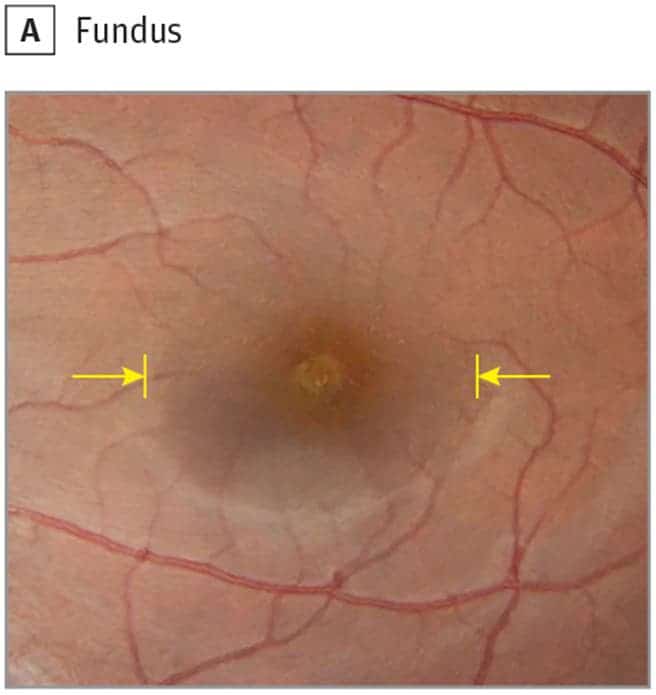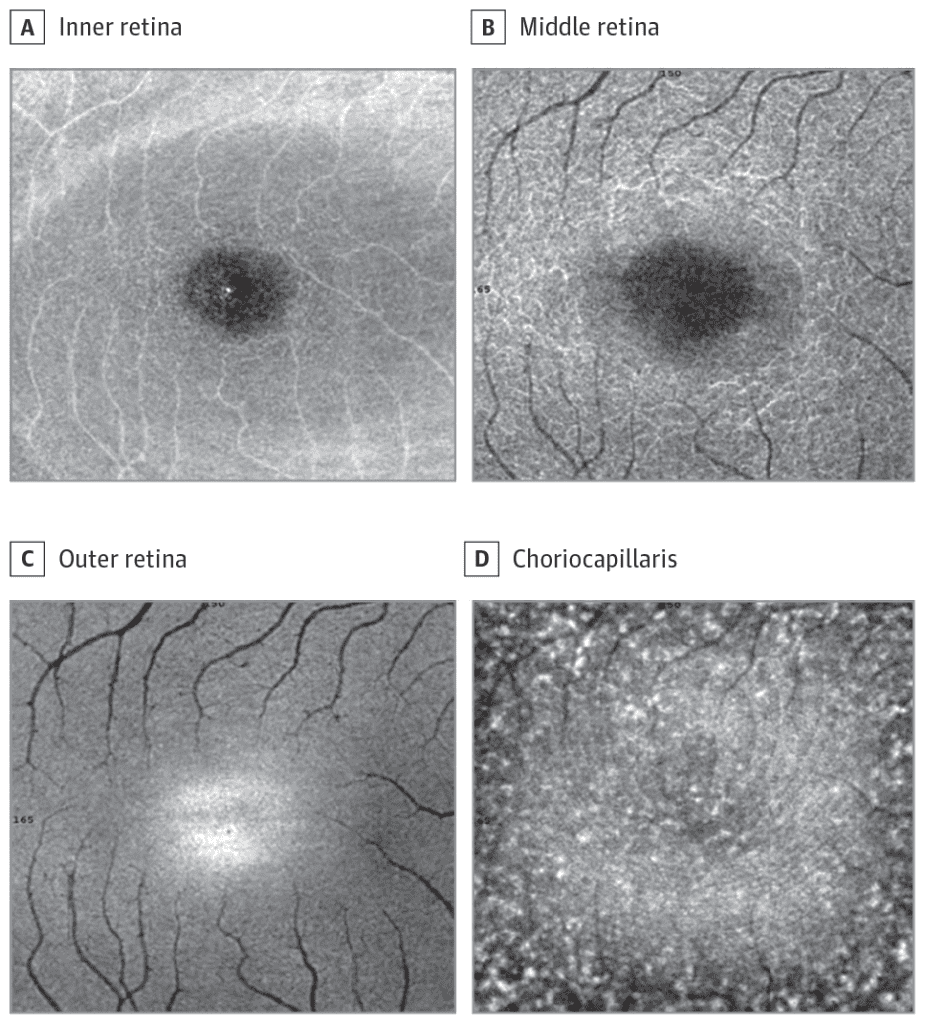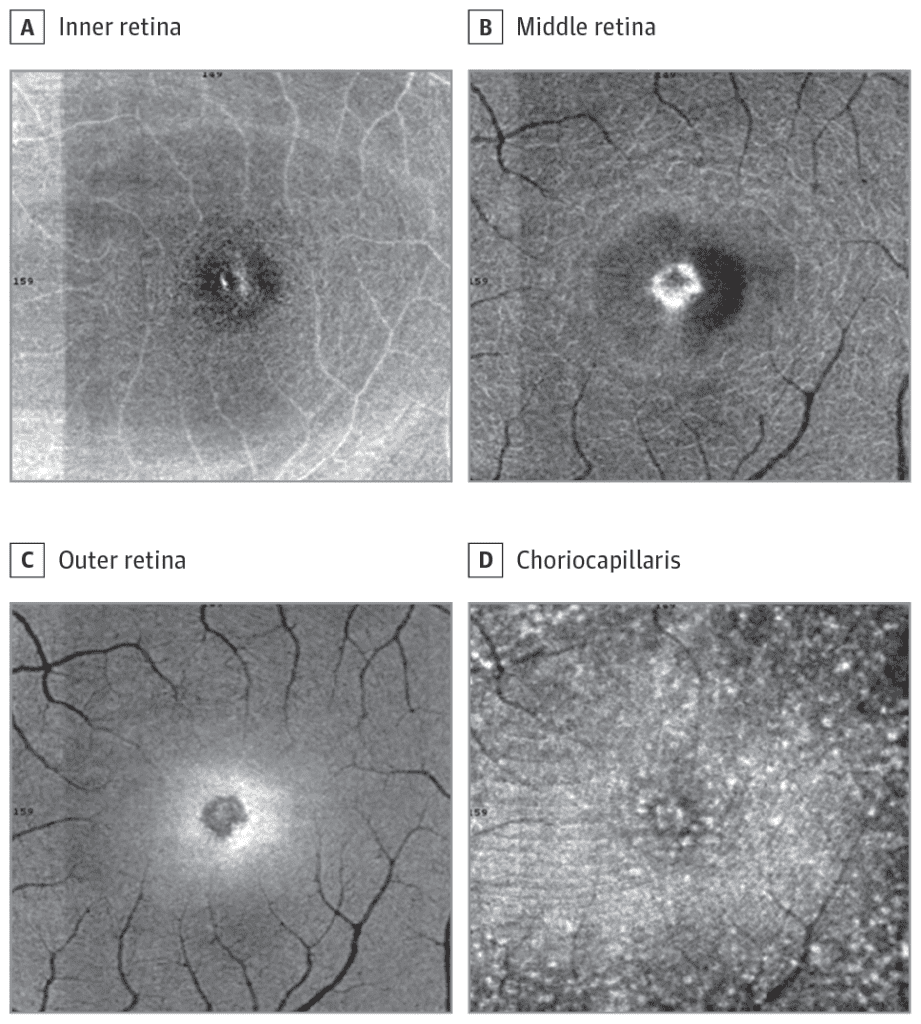Novel medical imaging technology has allowed doctors to peer into the eye and see, for the first time, the cellular damage incurred when looking directly at the sun during an eclipse.

The patient is a woman in her 20s, who damaged her eyes during the total solar eclipse in August, the paper reports. She told doctors that she looked at the sun for approximately 6 seconds several times during the eclipse, without using any type of protective eyewear. She later gazed at the star again, for 15 to 20 seconds, using a pair of eclipse glasses. The woman also said she viewed the solar eclipse with both eyes open.
Four hours later, she had blurred vision, metamorphopsia (a type of vision distortion), and couldn’t perceive color very well. The symptoms were worse in her left eye. Three days later she went to the doctor and was told she had a rare condition called solar retinopathy — her retinas had been damaged by direct sungazing.
Looking at a nuclear explosion
The sun is, basically, one humongous nuclear explosion in the sky, only held together by the fact that it’s so massive it can’t escape its own gravitational pull. If that sounds really metal, it’s only because it is.
Like any nuclear explosion worth its salt, the sun spews out massive amounts of energy across the electromagnetic spectrum. Although it is safe to look at the sun without eye protection during the totality phase of an eclipse (when the sun is fully obscured and most incoming radiation is blocked), the woman was not in the path of the totality. The aster was only 70% obscured during the eclipse’s peak in the area where she was watching the event. This meant incoming radiation wasn’t blocked entirely and carried enough energy to be hazardous to the naked eye.
Looking directly at the sun (or straight at the partially-obscured sun) can leave you with a very nasty case of solar retinopathy — a condition which develops when incoming radiation (most of which you perceive as light and warmth) from the sun damages the retina. Among its symptoms are blurry vision, and the formation of blind spots in one or both eyes. However, the damage is often painless and a person generally will not experience these symptoms immediately.
Because people are told not to view partial eclipses without protective gear, and because total solar eclipses are rare, doctors don’t often see patients with solar retinopathy. Also, in the past, they didn’t have the imaging tools currently available, so its effects on the eye aren’t well documented.
“We have never seen the cellular damage from an eclipse because this event rarely happens and we haven’t had this type of advanced technology to examine solar retinopathy until recently,” lead author Dr. Avnish Deobhakta, an assistant professor of ophthalmology at the Icahn School of Medicine at Mount Sinai, said in a statement.
Using a new technique dubbed adaptive optics, the doctors took “an exact look at this retinal damage on such a precise level [which] will help clinicians better understand the condition,” she explains.
After examination, doctors determined that the woman had developed solar retinopathy — in effect, the intense radiation burned holes in both of her retinas. The report also states that she had photochemical burns in her eyes — light-induced cell death. Using adaptive optics, the doctors could examine the microscopic structures and damage in minute detail in real time, the paper explains, allowing them to capture high-resolution images of the damaged rods and cones on the woman’s retinas.

Image credits Chris Y. Wu et al., 2017, JAMA Opht.

Image credits Chris Y. Wu et al., 2017, JAMA Opht.
The images reveal no significant structural damage in the right eye. They do, however, reveal a yellow-white spot in the left eye. Multiple areas with decreased sensitivity were identified in both eyes, and a central scotoma (blind spot) was further identified in the left eye. The team writes that they hope such images will help further our understanding of solar retinopathy, which currently remains untreatable.
Perhaps most importantly for the next eclipse, which will darken the skies in 2024, lead author Dr. Chris Wu hopes the report will help “prepare doctors and patients […] and make them more informed of the risks of directly viewing the sun without protective eyewear.”

Image via YouTube.
The paper “Acute Solar Retinopathy Imaged With Adaptive Optics, Optical Coherence Tomography Angiography, and En Face Optical Coherence Tomography” has been published in the journal JAMA Ophthalmolgy.


